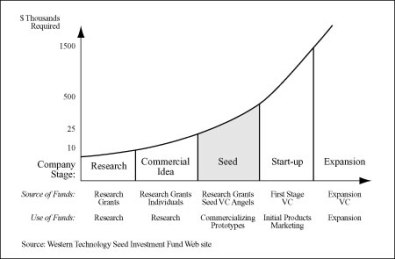My last article was about ideas and how to generate, incubate and finally commercialise your idea. But what should you do once you have the final product? Why try and sell it of course! But, there is a step in between. Most of us do not have the funds to actually get our idea into the marketplace. Whether it is the need for coders for an e commerce site or large scale manufacturing, the need for seed money and continued funding is felt by every venture in its early stages. Not only in the early stages, most successful start-ups go through multiple rounds of investment before they become operational. So here is a brief guide to the different kinds of funding available to young entrepreneurs and what should they expect from these sources.
- Grants
This is the most lucrative kind of funding out there. Many institutes give grants to ideas that they feel requires their backing. Grant money does not need to be returned (Some grants require you to payback a part of the money in the form of donations but this is considered to be debt financing explained below). This grant money is also (most of the time) well publicised and can help you gain recognition and associates.
The downside is that most grant money is issued to projects in their research stage. This money is also very tightly controlled and there are strict guidelines set up which limit how the money can be used. Grants are also fiercely competitive and very hard to come by.
- Debt Funding
This is the kind of funding that most banks and financial institutions issue. These institutions have very clear lending policies and are very clear about rate of interest, time of return etc. You need to have a clear business plan and repayment strategy for this kind of funding, along with good credit history. These banks also often need some kind of collateral. This kind of funding provides you with clear aims that your company needs to achieve to repay your loan and this also gives you full control of your idea and product without having to consult investors and venture capitalists at every turn.
The cons of this are that this funding needs to be repaid whether your business is a success or not. The repayment scheme is discussed when you are issued the loan and needs to be adhered to. This kind of funding also doesn’t give you any secondary benefits such as having the recognition that comes with having a big investor and the visibility which comes with it (look at flipkart with its billion dollar investment).
- Equity Funding
This is the kind of funding that most of us are familiar with. Almost all new start-ups want a piece of this very tiny cake. When you get equity funding you may be funded by friends and family, institutionalised angel investors, seed capitalist all the way upto venture capitalists. In return for the funds they provide these investors ask for equity (shares) in you start ups. This is a good thing as they can only get a return for their investment when your company does well. They often provide guidance and networking opportunities to you and your associates.
As great as it may sound there are a few problems with equity funding
- Your idea does not solely belong to you now. You have to keep your investors happy and appraised of your performance and have to take their views into account.
- It is extremely hard to get this kind of funding.
- Even if you do find somebody who is interested in funding your venture they might not be as forthcoming as you would like.
This is the basic difference between debt and equity funding:
- Crowdfunding
This is the newest kind of funding out there. It involves directly connecting with your market and asking them for funds for a product they might find useful. Sites such as Kickstarter and Indigogo are leaders in this field. This involves putting a prototype of your product on the website and having a reward based investment by the general public.
This is very helpful for really innovative small scaled ideas but requires an internet presence and a lot of luck.
Most small businesses go through the following stages:
And have the following investment model
However every start up is different and will require different kinds of funds at different times. So the final advice I would like to leave you with is choose wisely .So, may the odds be ever in your favour.
P.S. If you are having a hard time understanding investment and funding watch the first few episodes of the HBO series “Silicon Valley”.








